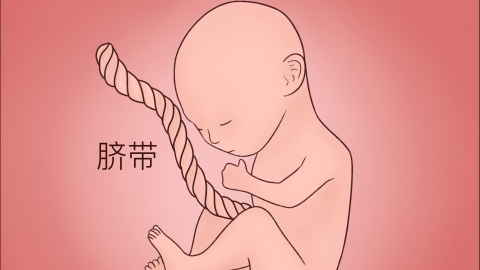Which medications can treat neonatal umbilical cord bleeding?
Generally, the main causes of newborn umbilical cord bleeding include the umbilical stump not having detached, loosely tied umbilical cord, omphalitis, vitamin K deficiency, and abnormal coagulation function. According to actual conditions and under medical guidance, medications such as povidone-iodine solution, Yunnan Baiyao Powder, Cefaclor for oral suspension, vitamin K1 injection, and human prothrombin complex may be selected for treatment. Detailed explanations are as follows:
1. Undetached Umbilical Stump
Normally, the umbilical stump in newborns falls off within 1-2 weeks after birth. Before detachment, there might be slight oozing, which is a normal physiological phenomenon. No specific medication is needed at this time; keeping the umbilical area clean and dry is sufficient. If there is slightly more oozing, povidone-iodine solution can be used under a doctor's guidance to disinfect the area, prevent infection, and promote local healing.
2. Loose Umbilical Cord Ligation
If the umbilical cord is tied too loosely during ligation, the tension might be inappropriate, causing incomplete closure of blood vessels and resulting in continuous minor bleeding. Healthcare professionals should retie the cord properly. After ligation, Yunnan Baiyao Powder can be used under medical advice; this medication helps stop bleeding, promotes wound healing, and reduces bleeding.

3. Omphalitis
Bacterial infection of the umbilical stump can cause omphalitis, and the inflammation may lead to local redness, swelling, oozing, and may also be accompanied by purulent discharge and odor. Under medical guidance, cefaclor for oral suspension and mupirocin ointment can be used. The former is taken orally to combat infection, while the latter is applied topically to inhibit bacterial growth. Together, they control inflammation and alleviate bleeding.
4. Vitamin K Deficiency
Newborns have an immature intestinal flora and are unable to synthesize sufficient vitamin K on their own. A deficiency in vitamin K can impair the synthesis of coagulation factors, leading to umbilical cord bleeding and possibly accompanied by skin bruising or hematemesis. Under medical guidance, vitamin K1 injection should be used. Supplementing vitamin K promotes the production of coagulation factors, improves coagulation function, and stops umbilical cord bleeding.
5. Abnormal Coagulation Function
If a newborn has congenital deficiencies in coagulation factors or other issues causing abnormal coagulation function, continuous umbilical cord bleeding may occur, possibly accompanied by uncontrolled bleeding from other sites. Under medical guidance, human prothrombin complex and fresh frozen plasma can be used. The former replenishes coagulation factors, while the latter provides various coagulation substances, helping to restore normal coagulation function and alleviate bleeding symptoms.
In daily life, it is important to keep the newborn's umbilical area clean and dry, avoiding contamination from urine or feces. Dress the newborn in loose clothing to minimize friction on the umbilical cord. Closely monitor the umbilical bleeding; if bleeding increases or is accompanied by abnormalities, seek medical attention promptly.




